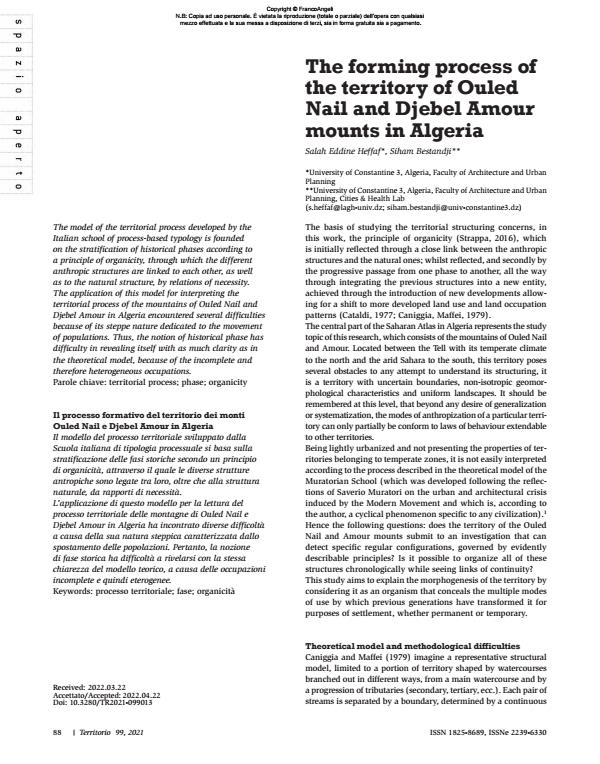The forming process of the territory of Ouled Nail and Djebel Amour mounts in Algeria
Journal title TERRITORIO
Author/s Salah Eddine Heffaf, Siham Bestandji
Publishing Year 2022 Issue 2021/99
Language English Pages 13 P. 88-100 File size 770 KB
DOI 10.3280/TR2021-099013
DOI is like a bar code for intellectual property: to have more infomation
click here
Below, you can see the article first page
If you want to buy this article in PDF format, you can do it, following the instructions to buy download credits

FrancoAngeli is member of Publishers International Linking Association, Inc (PILA), a not-for-profit association which run the CrossRef service enabling links to and from online scholarly content.
The model of the territorial process developed by the Italian school of process-based typology is founded on the stratification of historical phases according to a principle of organicity, through which the different anthropic structures are linked to each other, as well as to the natural structure, by relations of necessity. The application of this model for interpreting the territorial process of the mountains of Ouled Nail and Djebel Amour in Algeria encountered several difficulties because of its steppe nature dedicated to the movement of populations. Thus, the notion of historical phase has difficulty in revealing itself with as much clarity as in the theoretical model, because of the incomplete and therefore heterogeneous occupations.
Keywords: territorial process; phase; organicity
- Formation and evolution of residential buildings in the Djelfa region of Algeria Salah Eddine Heffaf, Siham Bestandji, Nadjla Samah Hamida, in Architecture Papers of the Faculty of Architecture and Design STU /2025 pp.15
DOI: 10.2478/alfa-2025-0003
Salah Eddine Heffaf, Siham Bestandji, The forming process of the territory of Ouled Nail and Djebel Amour mounts in Algeria in "TERRITORIO" 99/2021, pp 88-100, DOI: 10.3280/TR2021-099013